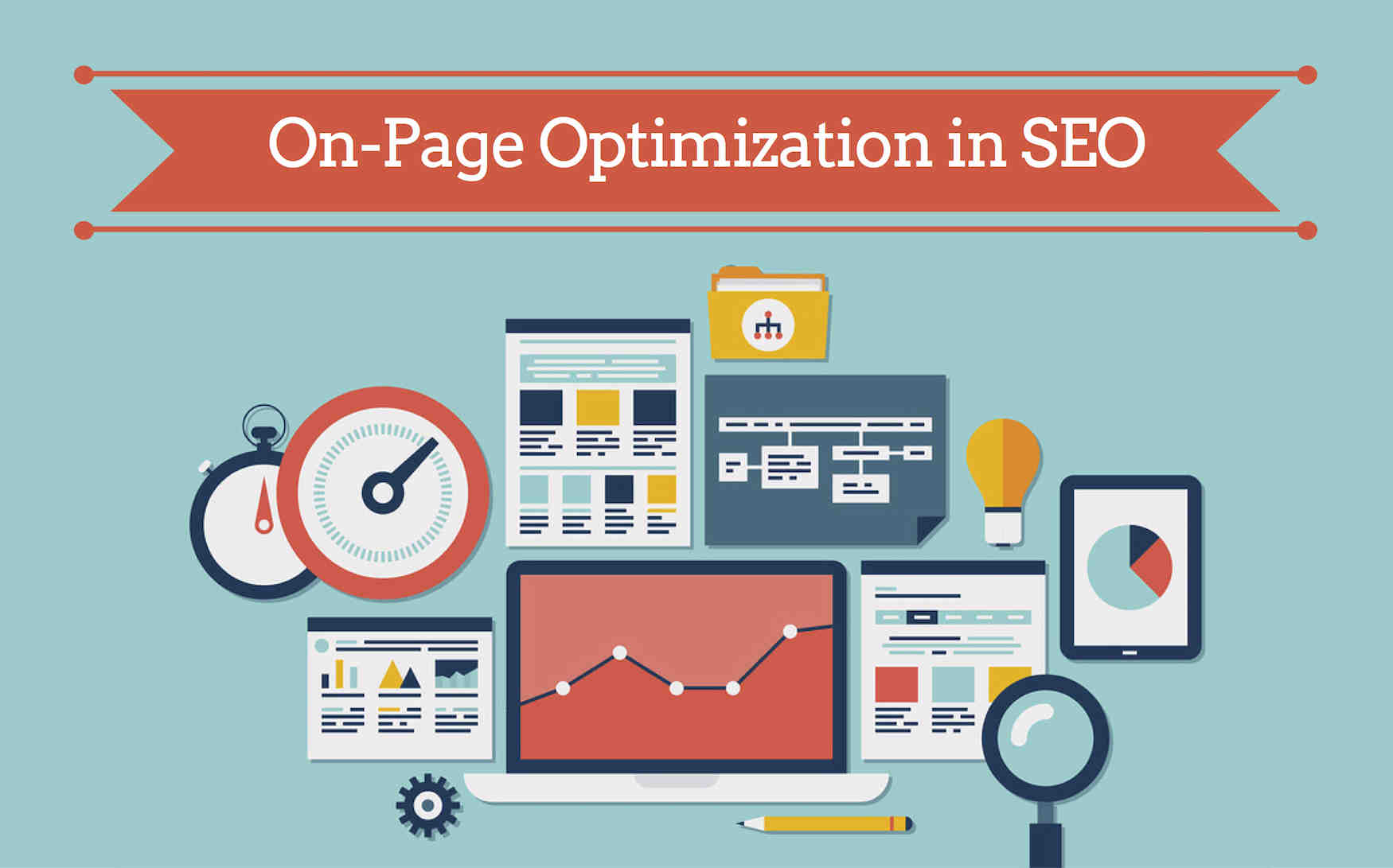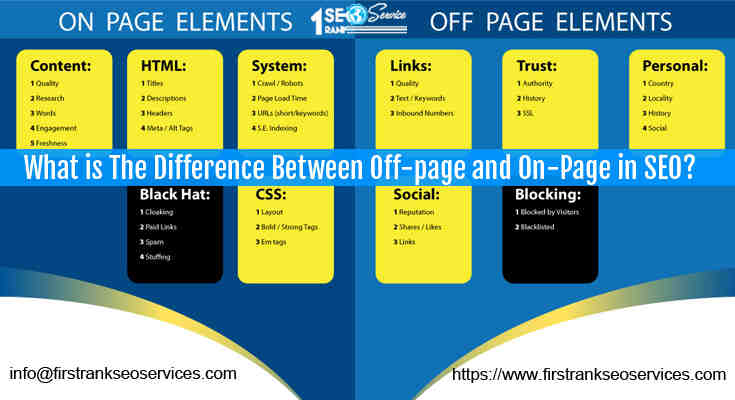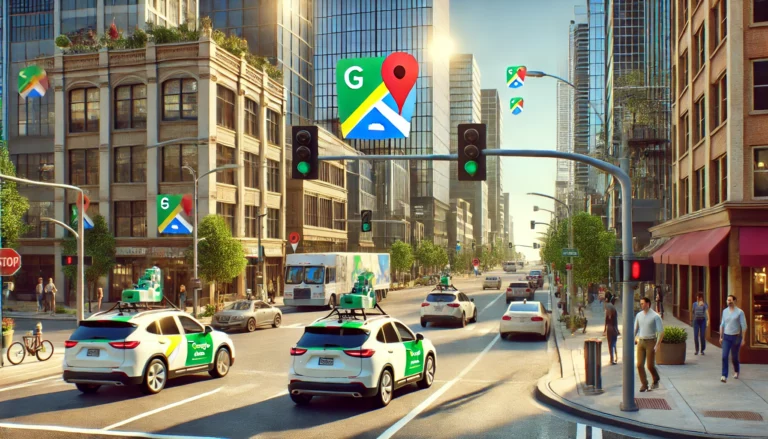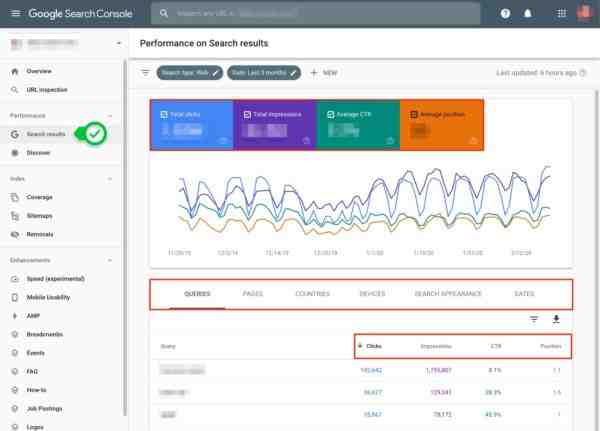On Page SEO
What is on-page SEO?
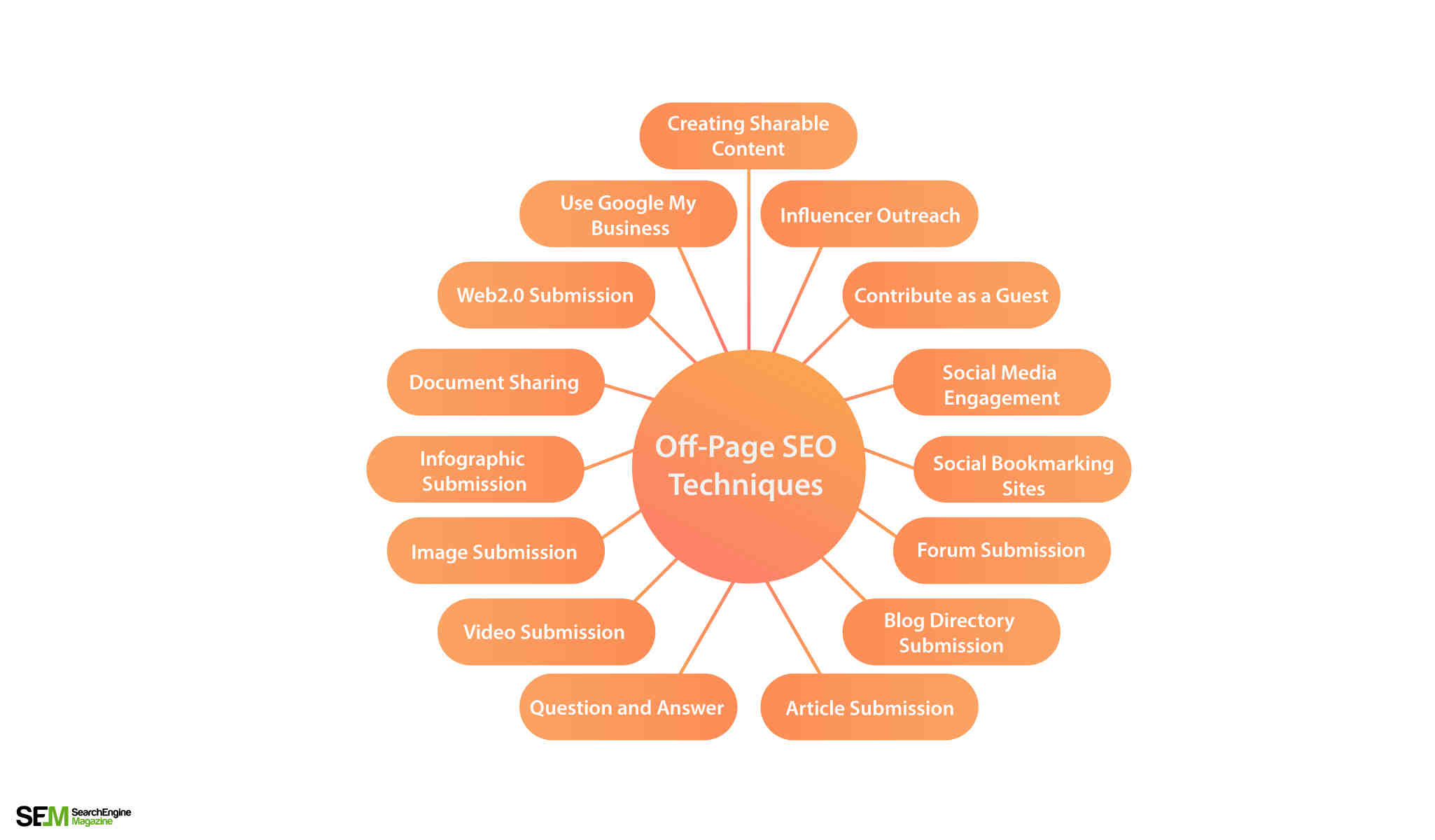
SEO on a site (also known as on-site SEO) refers to the practice of optimizing a website to improve a website’s search engine rankings and earn organic traffic. In addition to publishing relevant, high-quality content, SEO on the site also includes title optimization, HTML tags (title, meta, and header), and images.
On-site SEO focuses on optimizing the parts of your website that are under your control, while off-site SEO focuses on increasing the authority of your domain by creating content and earning backlinks from other websites.
SEO on page practice is the optimization of individual websites to better rank and earn more relevant search engine traffic. On-page refers to both the content and HTML source code of a page that can be optimized, as opposed to SEO off-page which refers to links and other external signals.
Examples of some SEO action items on a page include:
- Optimize title tags and meta descriptions.
- Writing in-depth, quality content.
- Cleaning the code of your website.
- Simplify website navigation.
- Accelerate your website.
What is a good on-page SEO score?
The main goal of SEO is to increase your presence in relevant online search results so that you can earn more leads, sales and revenue. In other words, the end of SEO is the development of your online business.
Content is one of the most important factors in SEO ranking. Search engines want to provide the best possible results so they give the best place to websites that have well researched, in-depth and well crafted content.
Follow these suggestions to improve your search engine optimization (SEO) and watch your website rise to the top of search engine results.
- Post relevant content. …
- Update your content regularly. …
- Metadata. …
- Have a site worth the links. …
- Use alt tags.
SEO checklist on a 33-point page
- Conduct keyword research to find the most popular keywords. …
- Choose one primary keyword for your content. …
- Choose three to five related keywords for your content. …
- Create a content plan for your keyword. …
- Write a title that includes the primary keyword. …
- Wrap the title in H1.
What is a good SEO ranking?
The rating you should strive for is 31 to 40. Improving a domain’s authority rating from 30 to 40 is much easier than improving from 70 to 80. The important thing to remember about domain authority is that it’s a living metric.
Ranking in SEO refers to the position of a website on a search engine results page. There are various ranking factors that affect whether a webpage appears more on the SERP based on the content relevant to the search term or the quality of the backlinks that point to the page.
How to determine your true organic Google ranking
- Log in to your Webmaster Tools account. …
- You will then see a list of your top keywords.
- Click on the specific keyword for which you want to see ranking information. …
- You can change the results by changing the date and country range according to your preferences.
technical SEO: How much your content can be indexed and indexed. content: Have the most relevant and best answers to a potential client’s question. SEO on the spot: optimizing your content and HTML. SEO off-site: Building authority to ensure that Google builds a deck in your favor.
How can I get 100 SEO score?
Follow these suggestions to improve your search engine optimization (SEO) and watch your website rise to the top of search engine results.
- Post relevant content. …
- Update your content regularly. …
- Metadata. …
- Have a site worth the links. …
- Use alt tags.
Fastest SEO Results: 5 Ways to Increase Search Traffic FAST!
- Optimize title tags. One of the first things I look at when evaluating a client’s (or potential client’s) website is the title tag structure. …
- Find “almost” ranking terms. …
- Merge root domains. …
- Repost blog content. …
- Return earned connections.
How to Optimize Videos Using Tubebuddy SEO Ratings
- Step # 1: Install TubeBuddy.
- Step 2: Start SEO Studio.
- Step # 3: Enter the target keyword.
- Step # 4: Enter a title and description.
- Step # 5: Enter tags.
- Step # 6: Upload a thumbnail.
- Step # 7: Save the template.
Optimization and page speed are displayed as a result of 100 points, and are often associated with a letter rating. It is almost impossible to achieve a score of 100, especially on semi-complex websites. Anything greater than 88 is considered good, but less and less means you should change to increase the score.
How do I know my SEO ranking?
To check your keyword rankings in Google rankings, use our free Keyword Positioning Tool. Just enter your domain name, keywords and search engine and click the blue “Check Position” button.
SEO score measurement is how well the user and technical aspects of your website contribute to search engine optimization, and ultimately, higher rankings and organic traffic.
Here are some simple ways you can check the ranking position of a particular page for a particular keyword using the Moz Pro tool.
- Analyze the keyword. …
- Page optimization. …
- Rank check. …
- Rank check feature on keyword researcher lists.
How can I learn SEO on my website?
It is possible to learn how to do SEO yourself, you don’t have to be an SEO expert or an expert. … If you know nothing, don’t stress, there is a lot to learn, but with the right approach you can arrive in less than 6 months. The most effective way to teach yourself SEO is to enroll in a good SEO course.
Here are the vital SEO steps you need to follow to make sure your website has what the search engines are looking for.
- Step 1: Choose a great domain name. …
- Step 2: Research the right keywords. …
- Step 3: Create your content. …
- Step 4: Optimize your code. …
- Step 5: Technical setup. …
- Step 6: Make connections. …
- Step 7: Things to check after launch.
Here are the steps to learning SEO in 6 steps:
- STEP 1 – Find a source for beginners. …
- STEP 2 – Practice! …
- STEP 3- Find a mentor. …
- STEP 4 – Join an SEO group. …
- STEP 5 – Know what is happening in the world of SEO. …
- STEP 6 – Rinse and repeat.
The best free SEO learning tools
- WordPress. …
- Google Analytics. …
- Google Search Console. …
- Google Analytics Academy. …
- Google Bookmark Manager Basics. …
- Google’s online marketing challenge. …
- Click Quick Audit (Chrome Extension) …
- Magnificent.
What is on-page SEO and off page SEO?
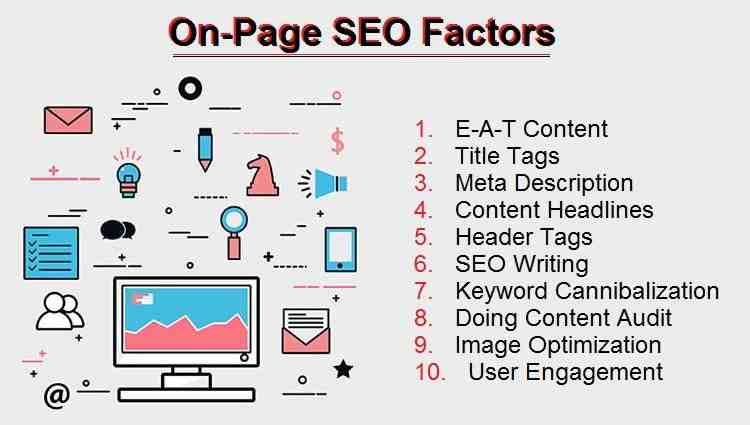
SEO on-site (or SEO on-site) practice is the optimization of websites for specific keywords to improve search visibility and traffic. Includes changes to elements such as title tags, titles, content, and more.
On-site SEO focuses on optimizing the parts of your website that are under your control, while off-site SEO focuses on increasing the authority of your domain by creating content and earning backlinks from other websites.
SEO off-site refers to everything that is done outside of your website and that can affect search engine rankings. Optimizing your website for off-site SEO means that you will need to improve the way users and search engines see your website in terms of credibility, authority, popularity and relevance.
This is because feedback, social signals, reviews, and other factors rely on the behavior of others. On and off the page they play their unique role in improving the ranking of your website. A website with poor on-page SEO but perfect off-site SEO will not rank as a website that is fully optimized for both.
What are two types of SEO?
| Type | Short description |
|---|---|
| SEO on the site | All the steps you take to make your website rank higher on search engine results pages (SERPs) fall under SEO on a page. |
| SEO off site | This applies to everything you do outside of your website to get through better and have a higher position in Google’s SERPs. |
The most important types are Technical SEO, On-Page SEO and Off-Page SEO.
SEO is divided into two parts: SEO on the page and SEO off the page. On-page SEO refers to all the techniques that can be applied to your website to improve your ranking on the SERP (search engine results pages), while off-page SEO refers to everything that can be done outside of your website how to would improve its visibility to the network.
When conducting keyword research, it is important to consider two different types of keywords, one of which is high-volume keywords and the other is long-tail keywords. Knowing the type of each keyword can help you target the right keywords with your SEO strategy.
What are SEO types?
| Type | Description |
|---|---|
| SEO on the site | All the steps you take to make your website rank higher on search engine results pages (SERPs) fall under SEO on a page. |
| SEO off site | This applies to everything you do outside of your website to get through better and have a higher position in Google’s SERPs. |
The most important types are Technical SEO, On-Page SEO and Off-Page SEO.
Search engine optimization (SEO) is the process of improving the quality and quantity of website traffic to a website or a website with search engines. SEO targets unpaid traffic (known as a “natural” or “organic” result), not direct traffic or paid traffic.
10 effective SEO techniques to drive organic traffic
- 1) Implement content optimization immediately.
- 2) Improve the user experience throughout the website.
- 3) Optimize for voice search.
- 4) First design for mobile devices.
- 5) Focus on groups of topics instead of keywords.
- 6) Write longer content (most of the time)
What are the main SEO types?
The most important types are Technical SEO, On-Page SEO and Off-Page SEO.
Explained types of SEO in digital marketing
- White-Hat SEO. White-hat SEO applies to all optimization techniques that adhere to Google’s search engine guidelines. …
- Black-Hat SEO. …
- Gray-Hat SEO. …
- Negative SEO. …
- SEO on the site. …
- Technical SEO. …
- SEO off site. …
- Popular searches.
- Keywords. Keyword research is the first step to a successful SEO strategy. …
- Meta tags. Meta tags continue to play a vital role in SEO. …
- Content. The truth is, content is king. …
- Feedback. If content is king, feedback is queen. …
- Social media. Algorithms have really changed since social media first appeared. …
- Product images.
10 effective SEO techniques to drive organic traffic
- 1) Implement content optimization immediately.
- 2) Improve the user experience throughout the website.
- 3) Optimize for voice search.
- 4) First design for mobile devices.
- 5) Focus on groups of topics instead of keywords.
- 6) Write longer content (most of the time)
What are the SEO techniques?
Here are four key types of SEO to get you started.
- SEO on the site. SEO on the page, also called on-site SEO, is the process of optimizing the content on your website. …
- SEO off site. Off-page SEO is basically anything that doesn’t happen on your website. …
- Technical SEO. …
- Local SEO.
Search engine optimization (SEO) is the process of improving the quality and quantity of website traffic to a website or a website with search engines. SEO targets unpaid traffic (known as a “natural” or “organic” result), not direct traffic or paid traffic.
So let’s take a look at these advanced SEO tips:
- Upgrade existing content. …
- Build thematic clusters. …
- Run a content audit and remove the poorly performing content. …
- Find and resolve keyword cannibalization issues. …
- Master Internal Connection. …
- Optimize for highlighted clips. …
- Repair the associated 404s. …
- Theft of links indicating competitive 404s.
- Keywords. Keyword research is the first step to a successful SEO strategy. …
- Meta tags. Meta tags continue to play a vital role in SEO. …
- Content. The truth is, content is king. …
- Feedback. If content is king, feedback is queen. …
- Social media. Algorithms have really changed since social media first appeared. …
- Product images.
What are SEO backlinks examples?
Backlinks are links created when one website links another. Backlinks are also called “inbound links” or “incoming links”. Backlinks are important for SEO.
How to get high quality feedback in 2021 (7 new strategies)
- Become a source for reporters and bloggers (HARO)
- Post the content of “Skyscraper”.
- Build links from outdated resources.
- Use verified content formats to generate links.
- Publish Ultimate Guides.
- Use brand strategies and techniques.
- Authority resource pages.
Backlinks that are most favorable for SEO
- 1) Editorial feedback. …
- 2) Feedback blogs for guests. …
- 3) Feedback in business profiles. …
- 4) Feedback from webinars. …
- 5) Free tool feedback. …
- 6) Feedback for confirmation. …
- 7) Feedback biographies for guest posts. …
- 8) Badge feedback.
When you move on to that, there are only two types of feedback: dofollow and nofollow. A person reading a website will never see the difference between dofollow and nofollow backlinks.
Is a one page website good for SEO?
Single-page websites are great for those who want to target a specific audience and provide them with a specific type of user experience. It’s easy to control their behavior on your site and steer them in a certain direction if you don’t have to worry about them clicking on various pages, perhaps in the wrong order.
SEO tricks for single page websites
- Pagin your page. Unpaginated architecture is a major complaint to one-page proponents. …
- Organize your CSS for spiders. …
- Seek authorization. …
- More marks H1. …
- Do not neglect readability. …
- Keep it fresh.
Generally speaking, 10-30 pages of well-crafted content showing your products and services should be enough for most SMEs. As long as you prioritize the user experience, you will get results.
One-page websites provide a number of useful features:
- Increases user engagement. …
- Simplicity makes navigation easier. …
- More adapted to mobile devices. …
- A one-page website works well with images. …
- More affordable to build and maintain. …
- Higher conversion rates. …
- SEO Difficulties: Analytics. …
- SEO difficulties: keyword targeting.
Which is example of on-page SEO?
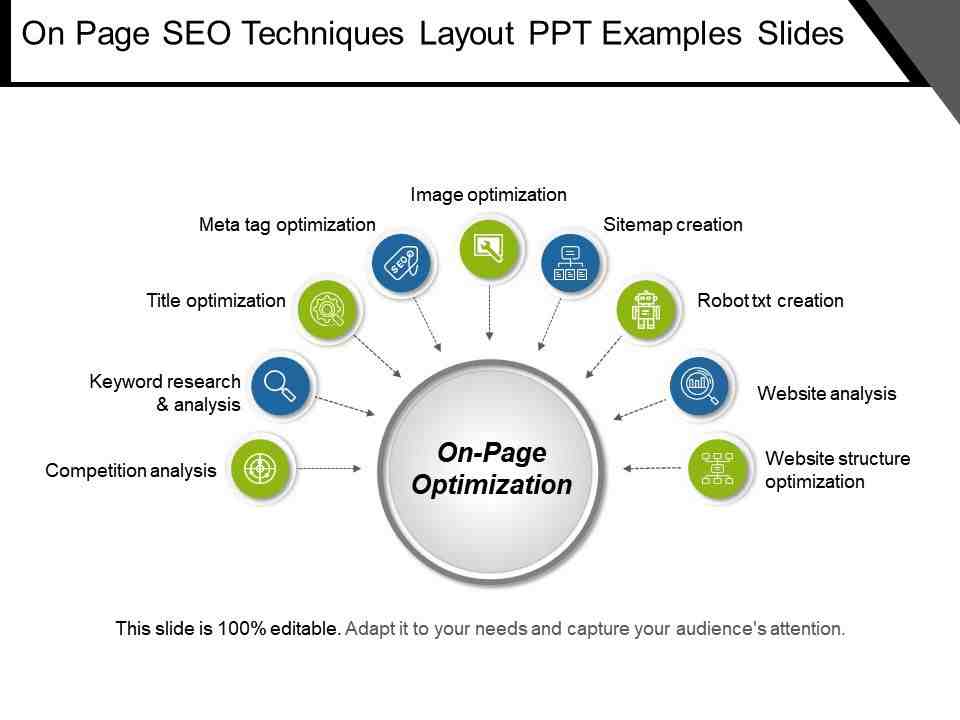
Examples of some SEO action items on a page include:
- Optimize title tags and meta descriptions.
- Writing in-depth, quality content.
- Cleaning the code of your website.
- Simplify website navigation.
- Accelerate your website.
SEO on a site (also known as on-site SEO) refers to the practice of optimizing a website to improve a website’s search engine rankings and earn organic traffic. In addition to publishing relevant, high-quality content, SEO on the site also includes title optimization, HTML tags (title, meta, and header), and images.
SEO works by optimizing your site for the search engine you want to rank for, whether it’s Google, Bing, Amazon, or YouTube. … (For example, Google has more than 200 ranking factors in its algorithm.) In most cases, when people think of “search engine optimization,” they think of “Google SEO”.
SEO checklist on the page
- Search your website.
- Perform an SEO audit and define the architecture of your website.
- Update URLs, page titles, and meta descriptions.
- Make sure your keyword is in your URL.
- Include your keyword on your page.
- Track keywords and topics for each page.
- Don’t keywords.
What is SEO Fullform?
SEO means search engine optimization, a digital marketing strategy that focuses on the presence of your website in search results on search engines like Google. Once you understand how SEO works, you can use a variety of tactics to increase your visibility (or how high you rank) in search results.
SEO stands for “search engine optimization”. It is the practice of increasing the quality and quantity of traffic to a website, as well as exposure to your brand, through unpaid (also known as “organic”) search engine results. Despite the acronym, SEO applies just as much to people as to search engines themselves.
How Search Engine Optimization (SEO) Works SEO is a type of digital marketing that specifically focuses on increasing a website’s search results on sites like Google, Yahoo and Bing.
Search engine optimization (SEO) is also the science of getting sites ranked better in search engines like Google. Because search is one of the main ways people discover content on the internet, a higher ranking in search engines can lead to an increase in website traffic.
Is SEO easy to learn?
It takes 1-3 months to learn the basics of SEO. The basics of search engine optimization can be understood and learned within 3 months, however more advanced concepts can take 6 to 18 months.
Fortunately, you can learn everything you need online and through the app, making a degree or college education for SEO unnecessary. In fact, most SEOs are self-taught and use mostly free online learning resources (many of which will be discussed in this guide).
SEO is a great career choice if you are a fan of digital marketing and ‘everything on the internet’. It is certainly a career of continuous learning and development, of great potential for financial reward and is attractive to those with a competitive range.
The short answer is that SEO is very effective – not only for generating traffic, but also for potential buyers and sales. Do not worry. A long answer involves research and data, not just empty statements. Most SEOs get too caught up in search-specific metrics, such as SERPs (search engine results pages), rankings, and organic traffic.
What are SEO tools?
17 SEO Tools to Optimize Your Website for 2021 Success
- Google Search Console. The Google Search Console is a collection of services that let you know how a search engine looks at your website. …
- Semrush. …
- BuzzStream. …
- DreamHost SEO Toolkit.
- Moz Pro. …
- Linkody. …
- Ontolo. …
- HubSpot Website Evaluator.
SEO tools explore the potential of websites to rank high on search engine ranking sites. They provide information on backlinks and keywords as well as insight into SEO competition on the Internet.
SEO means search engine optimization, a digital marketing strategy that focuses on the presence of your website in search results on search engines like Google. Once you understand how SEO works, you can use a variety of tactics to increase your visibility (or how high you rank) in search results.
SEO works by optimizing your site for the search engine you want to rank for, whether it’s Google, Bing, Amazon, or YouTube. … (For example, Google has more than 200 ranking factors in its algorithm.) In most cases, when people think of “search engine optimization,” they think of “Google SEO”.
How do I start SEO?
Here are the vital SEO steps you need to follow to make sure your website has what the search engines are looking for.
- Step 1: Choose a great domain name. …
- Step 2: Research the right keywords. …
- Step 3: Create your content. …
- Step 4: Optimize your code. …
- Step 5: Technical setup. …
- Step 6: Make connections. …
- Step 7: Things to check after launch.
You can absolutely do SEO yourself. With a little research and a lot of practice, anyone can learn how to do SEO for their business. A quick way to get started with SEO is to enter your URL here and then focus your efforts on recommended action items.
- Step 1: Build your SEO skills. …
- Step 2: Improve your writing skills. …
- Step 3: Acquire basic development skills. …
- Step 4: Build your analytical skills. …
- Step 5: Learn how to use SEO tools. …
- Step 6: Become a Google webmaster guidelines expert. …
- Step 7: Be practical, build your SEO experience.
What is an SEO strategy?
- Step # 1: Create a keyword list.
- Step 2: Analyze Google’s first page.
- Step 3: Create something different or better.
- Step # 4: Add a hook.
- Step # 5: Optimize for SEO on the page.
- Step # 6: Optimize for search intent.
- Step # 7: Make your content look great.
- Step # 8: Build links to your site.
What is the difference between on page and off page SEO?
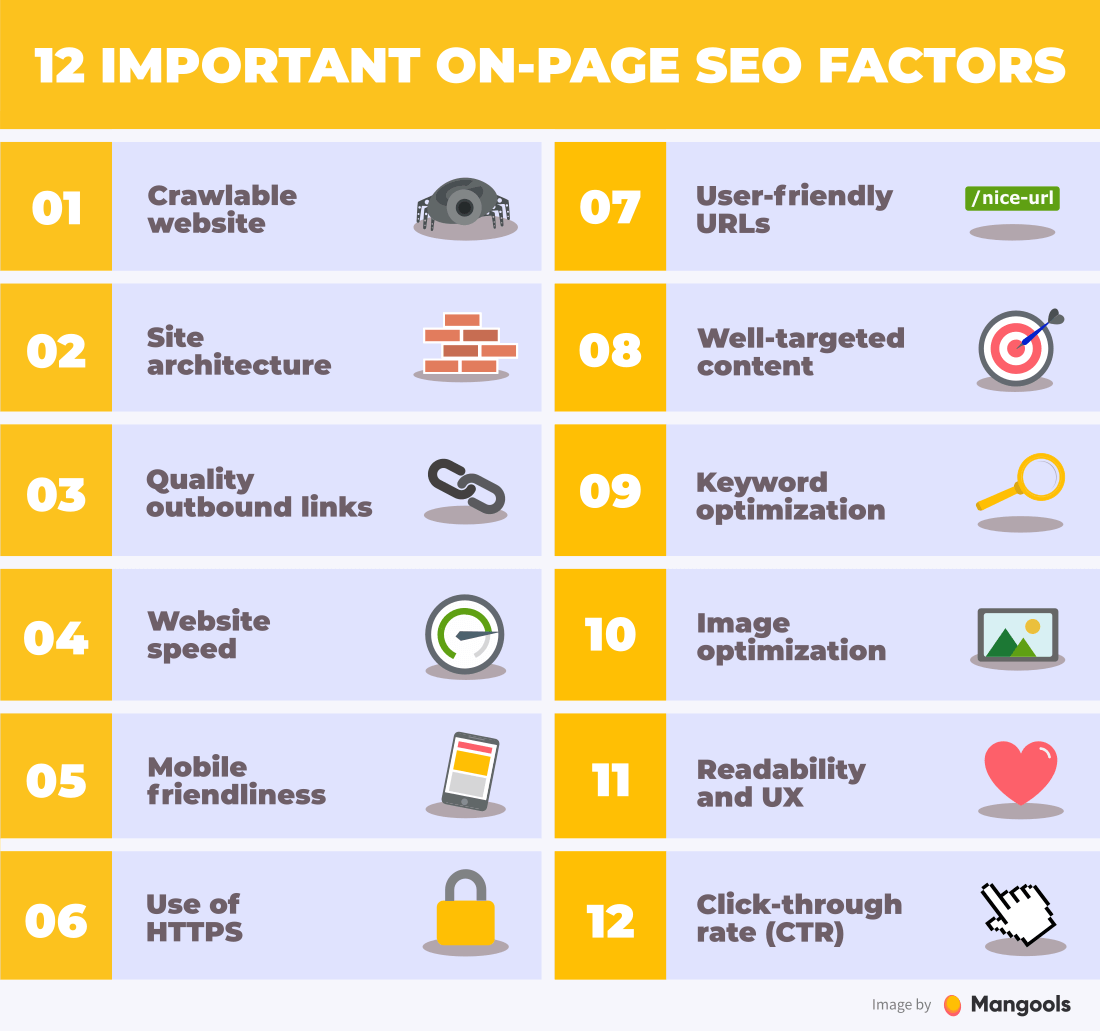
On-site SEO focuses on optimizing the parts of your website that are under your control, while off-site SEO focuses on increasing the authority of your domain by creating content and earning backlinks from other websites.
If you are smaller, a local business; Attention to local SEO efforts is more important than ever. … Both Bing and Google have SEO user guides that determine exactly how their services rank websites. SEO on a page generally refers to the structure of your website (how it is built) and how effectively you use your website.
SEO off-site refers to everything that is done outside of your website and that can affect search engine rankings. Optimizing your website for off-site SEO means that you will need to improve the way users and search engines see your website in terms of credibility, authority, popularity and relevance.
Off-page SEO may seem more difficult than SEO on a page because many factors off-page are not completely under your control, but that’s the whole point. The harder it is to earn, the more reliable it is as a ranking factor.
What is crawling in SEO?
An indexing tool is a program used by search engines to collect data from the Internet. When the crawler visits a web page, it selects the entire content of the web page (i.e., text) and stores it in a database. … The crawler will later visit the stored links, allowing you to move from one website to another.
Searching and indexing is the process that web browsers (robots or spiders) use to visit and download a page and extract its links to discover additional pages. … If a search engine detects changes to a page after indexing the page, it will update its index in response to those detected changes.
Crawling. The first step is to find out which pages exist on the web. There is no central registry of all websites, so Google must constantly search for new pages and add them to the list of known pages. … Some more pages are revealed when a website owner submits a list of pages (a sitemap) for Google to index.
The crawler tracks and collects URLs to prepare for crawling. By giving them a website as a starting point, they will track all valid links on those pages. As they go from connection to. link, return information about these websites to Google’s servers.
Is Google a crawler?
About the URL Validator
- See the current status of the URL index: Get information about Google’s indexed version of your page. …
- Review the active URL: Check to see if the page on your site can be indexed.
- URL indexing request: You can request that Google index (or re-index) the URL.
Google is a fully automated search engine that uses software known as “web indexing tools” that regularly searches the web to find websites that we will add to our index.
You can block access in the following ways:
- To prevent your site from appearing on Google News, block access to Googlebot-News using robots. txt file.
- To prevent your website from appearing in Google News and Google Search, block access to Googlebot using a robot. txt file.
You have crawl errors In some cases, Google will not crawl some pages on your site because it cannot crawl them. … To identify these indexing errors, go to Google Webmaster Tools â † ’Select your site â †’ Click on â € œCrawâ € â † Click Click on â € œCrawl Errorsâ €.
What is web crawling in digital marketing?
A web crawler or spider is a type of robot typically operated by search engines like Google and Bing. Their purpose is to index the content of web pages across the Internet so that those web pages can appear in search engine results.
Finding information by indexing We use software known as web indexing tools to discover publicly available web pages. Indexing tools browse web pages and follow links on those pages, much like you would browse content on the web. They go from link to link and bring information about those websites back to Google’s servers.
Indexing is when Google or another search engine sends a bot to a web page or web post and “reads” the page. … Indexing is the first part of a search engine to recognize your page and display it in search results. However, if your page is indexed, it does not necessarily mean that your page is (or will be) indexed.
Indexing is the process that search engine robots work to discover publicly available websites. Indexing means when search engine robots index web pages and save a copy of all information to index servers, and search engines display relevant results on the search engine when a user performs a search query.
What is Google Webmaster in SEO?
Google Webmaster Tools (GWT) is an essential component for Google to communicate with webmasters (or webmasters). The Google Search Console or Google Webmaster Tool allows you to differentiate problems with your website and can even notify you if your website is contaminated with malware or not.
Google tools for webmasters are really a valuable tool for SEO. It gives you at a glance information about all the important SEO aspects of a website, such as keywords, links, indexing errors, etc. If you don’t already use it, take the time to get to know it – it will help you get better placements safely.
In order to focus more on the topic we are talking about (Google search), we are changing the name from “Google Webmasters Central” to “Google Search Central,” both on our websites and on social media. Our goal remains the same; we want to help people improve the visibility of their website on Google search.
To set up Webmaster Tools, visit http://www.google.com/webmasters/tools and sign in with your Google Account – preferably the one you use for GA. Click “Add site”. And enter the URL of your site. … You will be offered a number of options, but the easiest way is to check through your GA account.
Why is on-page SEO important?
SEO on a page is important because it helps search engines understand your website and its content, as well as determine if it is relevant to search engine query. As search engines become more sophisticated, search engine results pages (SERPs) are increasingly focused on relevance and semantics.
Why is SEO on the site important? SEO on a page is key to improving your SERP ranking, and if done right, it tells Google and search engines about the content on your website and, more importantly, how you provide value to visitors and your customers.
It uses both content and technical elements to improve the quality of the site, so the more SEO you do on a page, the more traffic you will have on the website and the more relevant the traffic will be. There are many different technical aspects of a website that can be optimized using SEO on the page, and they include: Title tags.
Why SEO on the Page is So Important As Google’s search algorithm becomes more sophisticated, the SEO factors on the page will become more important. When done correctly, on-site SEO allows search engines to understand your content in order to rank the most relevant URLs for specific queries.
What are the types of off-page SEO?
SEO techniques off-site- five steps to increase domain authority
- Creating valuable feedback. Creating backlinks is the core of off-site SEO and is a technique that is crucial for any website that strives to rank on the first page. …
- Social media marketing. …
- Guest content. …
- Forum post. …
- Local censuses.
Off-site SEO refers to all the activities that take place outside of your website in order to raise the ranking of your website. Tips outside of SEO include links, social media strategy, marketing influence, etc. One example is if you write a great blog post and someone with high influence in your niche retweets a link to it.
Here are four key types of SEO to get you started.
- SEO on the site. SEO on the page, also called on-site SEO, is the process of optimizing the content on your website. …
- SEO off site. Off-page SEO is basically anything that doesn’t happen on your website. …
- Technical SEO. …
- Local SEO.
